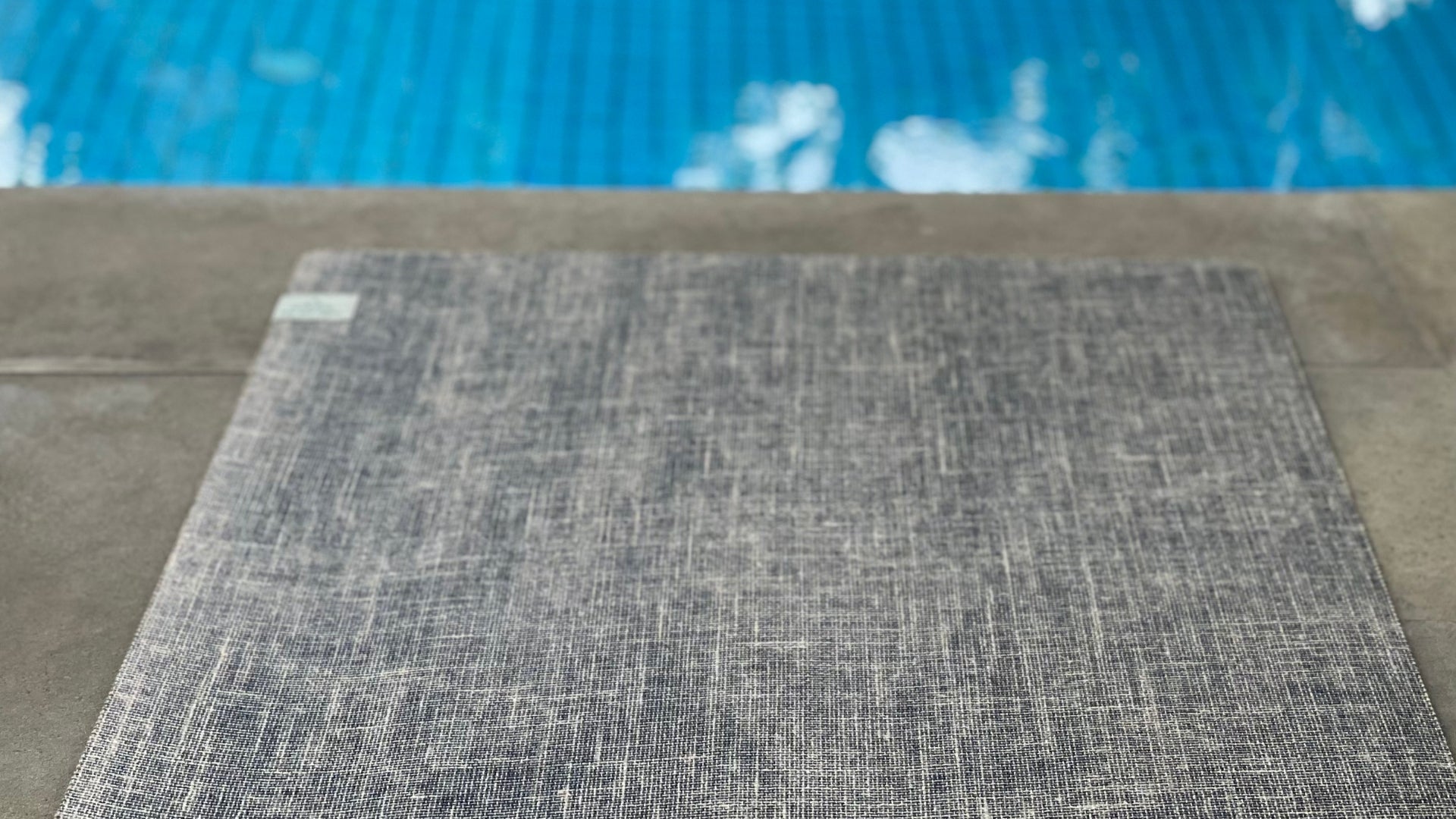
The Ultimate Guide To Yoga Mat Care: How To Make Yours Last Longer
A yoga mat is more than just a piece of equipment. It’s your personal space of movement, mindfulness and growth. You might be a daily practitioner, or you might be just doing yoga over the weekend. Once you choose the most suitable yoga mat for your level and needs, taking care of your yoga mat is important if you’re looking to use it for many years. Plus, regular cleaning makes sure that you have a clean, safe and supportive surface to practice on.
In this guide, we’ll take you through everything you need to know about taking care of your yoga mat.
Why Should You Care For Your Mat?
Each time we practice yoga, our mats absorb sweat, oils and dirt from our skin. If we don’t clean our yoga mats regularly, these residues can build up and result in an unpleasant odour and even cause skin irritation.
Cleaning the yoga mat is not only important for hygiene, but also to preserve the integrity of the material it is made of, especially if you’ve invested in a high-quality, eco-friendly mat like our Rest and Digest Jute and Natural Rubber Yoga Mat.
What Happens if You Don’t Look After It?
If you don’t clean your mat often or else, if you store it while still damp with sweat, bacteria and mould might grow, and with time, the surface of your yoga mat may degrade. In worst cases, it can crack or become slippery, making your practice dangerous. Also, this might affect the longevity of your yoga mat, meaning you might have to replace your mat with a new one within only months of use. So, a little bit of cleaning after each practice can go a long way in keeping your mat fresh, safe and durable.
How Often Should You Clean Your Mat?
How often you need to clean your yoga mat depends on how often you practice and the intensity. If you’re practicing daily or into hot yoga, we recommend that you wipe your mat after every practice and do a deep clean once every week. However, if you’re not a frequent practitioner, it is sufficient to wipe down after each use and do a deep clean once every other week.
Having said that, if you’re practicing outside or in more humid environments, we recommend cleaning your mat more frequently and thoroughly to prevent mold and mildew buildup. Always pay attention to how much sweat and dirt get collected and thereby adjust your cleaning frequency and intensity. Remember, too much cleaning unnecessarily can also damage your yoga mat.

How to Clean It?
Cleaning your yoga mat doesn’t have to be hard. Routine maintenance will save you from having to scrub a dirty mat later.
Daily Maintenance
Make sure to wipe down your mat with a clean, damp cloth after each practice, especially if you’ve sweated. This will help remove skin oils and dirt before it sets into the mat. Note that some mats might be difficult to clean due to the texture of their surface and the materials they are made of.
Luckily, daily maintenance is easy with our Rest and Digest Yoga Mat. You just need to wipe down with a cloth dampened with water. Since our mat is made of natural materials, make sure that you don’t use any harsh chemicals, as this will break down the natural rubber.
Deep Cleaning
For a deeper clean, use a mixture of warm water and a few drops of mild soap (or vinegar). You can use a soft cloth or sponge to gently scrub both sides of the mat. Don’t immerse the mat in water, especially eco mats like our Rest and Digest Natural Jute and Rubber Mat.
Also, don’t roll the mat soon after cleaning. Let it air dry completely. But don’t hang it in direct sunlight either, as the intense heat can break down the biodegradable materials.
What to Use?
When cleaning your yoga mat, it is important that you choose the right products or cleaning solution to maintain the texture and durability of the mat.
Commercial Cleaners
There are many commercial cleaners out there, specially made to clean yoga mats. However, most of these contain harsh chemicals like bleach, which can damage natural fibres, leading to cracks and tears. Some of these chemicals might even be harmful to your skin and cause allergic reactions.
So, if you prefer the convenience of commercial cleaners, always check the ingredients to make sure that you choose a non-toxic, alcohol-free and eco-friendly option.
Natural Solutions
Some mats, like Rest and Digest Natural Rubber Yoga Mat, however, require a gentler cleaning process. Using natural ingredients to clean is a great way to keep these high-quality yoga mats in top condition without exposure to harsh chemicals.
You could try a solution of equal parts water and white vinegar, a commonly known natural disinfectant. Consider adding a few drops of essential oils like lavender, tea tree or eucalyptus to give your mat a pleasant smell.
How to Store It?
Just like cleaning, proper storage is also important to keep your yoga mat in good shape. So, don’t leave it rolled up for too long, as it can lose its elasticity.
Proper Yoga Mat Rolling Technique
When rolling your mat, don’t do it too tightly, as this can create a permanent bend or crease. It is a good practice to roll your mat with the practice side out each time. For extra protection, consider storing your mat with a carry strap like the one that comes with our Rest and Digest Yoga Mat. The strap can keep the mat rolled tightly and prevent it from unravelling or getting dirty.
Where to Store Your Mat
Make sure to store your mat in a cool, dry place away from direct sunlight. Also, don’t store in humid environments because moisture can cause mildew growth, especially in mats made of natural materials. You could probably consider a closet, gym bag or another cool area where it won’t be exposed to moisture or UV rays.
More Tips to Extend the Life of Your Mat

Other than cleaning and storage, you need to be aware of the best practices of maintaining a yoga mat if you’re to extend its life.
Avoid Direct Sunlight
Exposing your mat to direct sunlight for too long can degrade the natural materials and make them lose their texture and become brittle. Especially, if you’re practicing outside, take special care to keep your mat in the shade whenever you can and always store it in a cool, dry place.
Use a Towel
Using a towel when practicing yoga is another smart way to protect the mat’s surface from getting worn out, especially in high-contact areas like under your hands and feet. This is because the towel can absorb sweat and dirt, reducing the need for deep cleaning. Besides, yoga towels designed to fit your mat can provide that extra grip during intense sessions.
Rotate Your Mat
Just like we rotate our mattresses, it’s good to rotate the mat occasionally. This will help distribute wear evenly so specific areas of the mat don’t break down faster than others.
Easy to Clean Yoga Products from Rest and Digest
If you’re looking for a durable and an easy to clean yoga mat, our Rest and Digest Jute and Natural Rubber Yoga Mat is the way to go. Made from sustainable materials, it has a natural, earthy feel that softens over time. This 4mm thick mat weighs 2.5kg and is 183cm x 61cm, so there’s plenty of room for your practice.
If you’re new to yoga, our Rest and Digest Yoga Bundle has everything you need for a full yoga experience: the jute and natural rubber yoga mat, a carry strap, an extra-long strength strap and a pair of cork yoga blocks so you have versatility and support for your practice.
Looking after your yoga mat is important for both your health and your practice. Regular cleaning, proper storage and mindful use will help your mat last longer and stay clean and supportive for your practice. Whether you use a sustainable mat like our Rest and Digest Jute and Natural Rubber Yoga Mat or another favourite, follow these tips and your mat will be in perfect condition for years to come.





